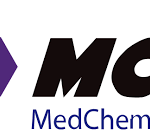Acetyl-Adhesin (1025-1044) amide-Get quote

Description
Acetyl-Adhesin (1025-1044) amide is a 20-peptide fragment of Streptococcus pyogenes cell surface adhesin that acts as an antimicrobial peptide to specifically inhibit the binding of adhesin to salivary receptors and prevent recolonization of Streptococcus pyogenes[1].—–C97H160N26O32—-[1]C G Kelly, et al. A synthetic peptide adhesion epitope as a novel antimicrobial agent. Nat Biotechnol. 1999 Jan;17(1):42-7. –320350-56-9–2202.46—-O=C(N[C@@H](CCC(N)=O)C(N[C@@H](CC(C)C)C(N[C@@H](CCCCN)C(N[C@@H]([C@H](O)C)C(N[C@@H](C)C(N[C@@H](CC(O)=O)C(N[C@@H](CC(C)C)C(N1[C@@H](CCC1)C(N[C@@H](C)C(NCC(N[C@@H](CCCNC(N)=N)C(N[C@@H](CC(O)=O)C(N[C@@H](CCC(O)=O)C(N[C@@H]([C@H](O)C)C(N[C@@H]([C@H](O)C)C(N[C@@H](CO)C(N[C@@H](CC2=CC=CC=C2)C(N[C@@H](C(C)C)C(N[C@@H](CC(C)C)C(N[C@@H](C(C)C)C(N)=O)=O)=O)=O)=O)=O)=O)=O)=O)=O)=O)=O)=O)=O)=O)=O)=O)=O)=O)=O)C–Infection–10 mM in DMSO–Bacterial—-Anti-infection–Peptides



 Did you check our products for animal nutrition?
Did you check our products for animal nutrition? 